“Here’s me,” Andrew Garfield says, gesturing toward a medieval watercolor of a lion. He leans over a display case containing a 14th century book on the zodiac and starts to read aloud from its object label.
“Leo. Fire,” he says, listing off the ancient attributes of his astrological sign. “Hot and dry. Extroverted. Quick-tempered — told you. Ambitious — yes. These aren’t very nice qualities, I would say. Heart, back, spine — yes. Circulatory, heart problems — yes; well, I had meningitis when I was born.”
It’s not quite a perfect fit, this description. But at 41, he’ll take it. In midlife, he’s begun collecting any talisman he feels may instruct him in how to live. He refers to them often in conversation: bits of poetry, quotations, scenes from films. And astrology too, of which he has a more than cursory understanding.
And yet it’s a mere cosmic coincidence that “Rising Signs: The Medieval Science of Astrology” is currently on display at the Getty Center, where he has chosen to meet this Saturday evening. “Oh, s—, that’s kind of dope,” he says, looking over the list of exhibitions.
He’s spent the day surfing in Malibu, and he looks and sounds the part, a slight sunburn already showing itself on his face. He apologizes if it seems like he’s just washed ashore.
“My consciousness is all over the map right now,” he says, tourists swirling around him in the lobby. Before exploring the museum, he suggests sitting: “I feel like we should just get grounded for a second.”
Garfield turned to the ocean today for a reason. Catching even one wave, he’s found, allows him to “get back into some semblance of order.” He’s at the tail end of the press tour for his new film, the romantic drama “We Live in Time,” and it’s left him feeling deregulated.
In the movie, Garfield and Florence Pugh play a young couple grappling with how to maximize their final months together after her character is diagnosed with terminal cancer. Because of the film’s themes, discussions about it have tended to focus on death and grief. On the “Modern Love” podcast, Garfield unexpectedly dissolved into tears while reading an essay because it made him think about how “we all just want our fair shot at creating a life.”
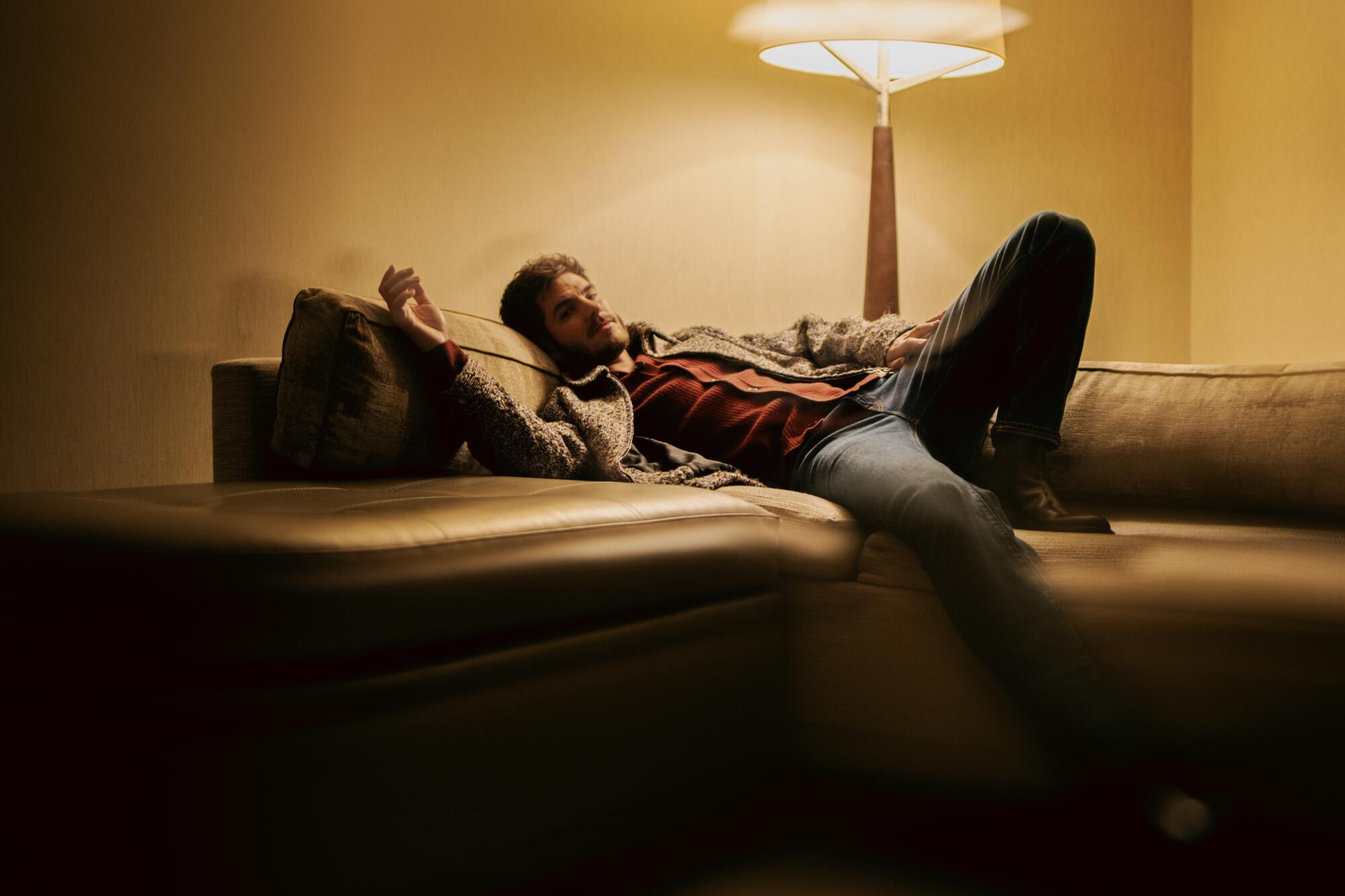
A video clip of this moment generated an outpouring of support for Garfield, who has been open about how deeply he was rocked by the death of his mother from pancreatic cancer in 2019. But his willingness to show that level of emotion publicly also tapped into a cultural renaissance for men who treat vulnerability as strength and not weakness. In the Netflix series “Nobody Wants This,” Adam Brody’s hot rabbi is more comfortable telling a woman he likes her than trying to play it cool. On “The Golden Bachelorette,” the star’s Baby Boomer suitors are bonding as they learn in real time to be open about their feelings at age 70. And during the presidential election campaign, Second Gentleman Douglas Emhoff has so successfully modeled being the cheerleading husband to a powerful woman that Andy Samberg made “wife guy” supportiveness the core of his Emhoff spoof on “Saturday Night Live.”
Garfield doesn’t know how to do it any other way.
“Because otherwise, what’s the f— point? I’m just gonna sit here and do all the safe s—?” he says. “Like, ‘Yeah, it was great working with Florence, and I love [director] John Crowley.’ I want to offer something true and vulnerable. Because God, I don’t want to get highfalutin in any way, but we’re in trouble right now in our culture. There’s a kind of epidemic of meaninglessness permeating the culture in a way that is now undeniable. I don’t want to add to the din of numbness and a kind of toeing the capitalist line.”
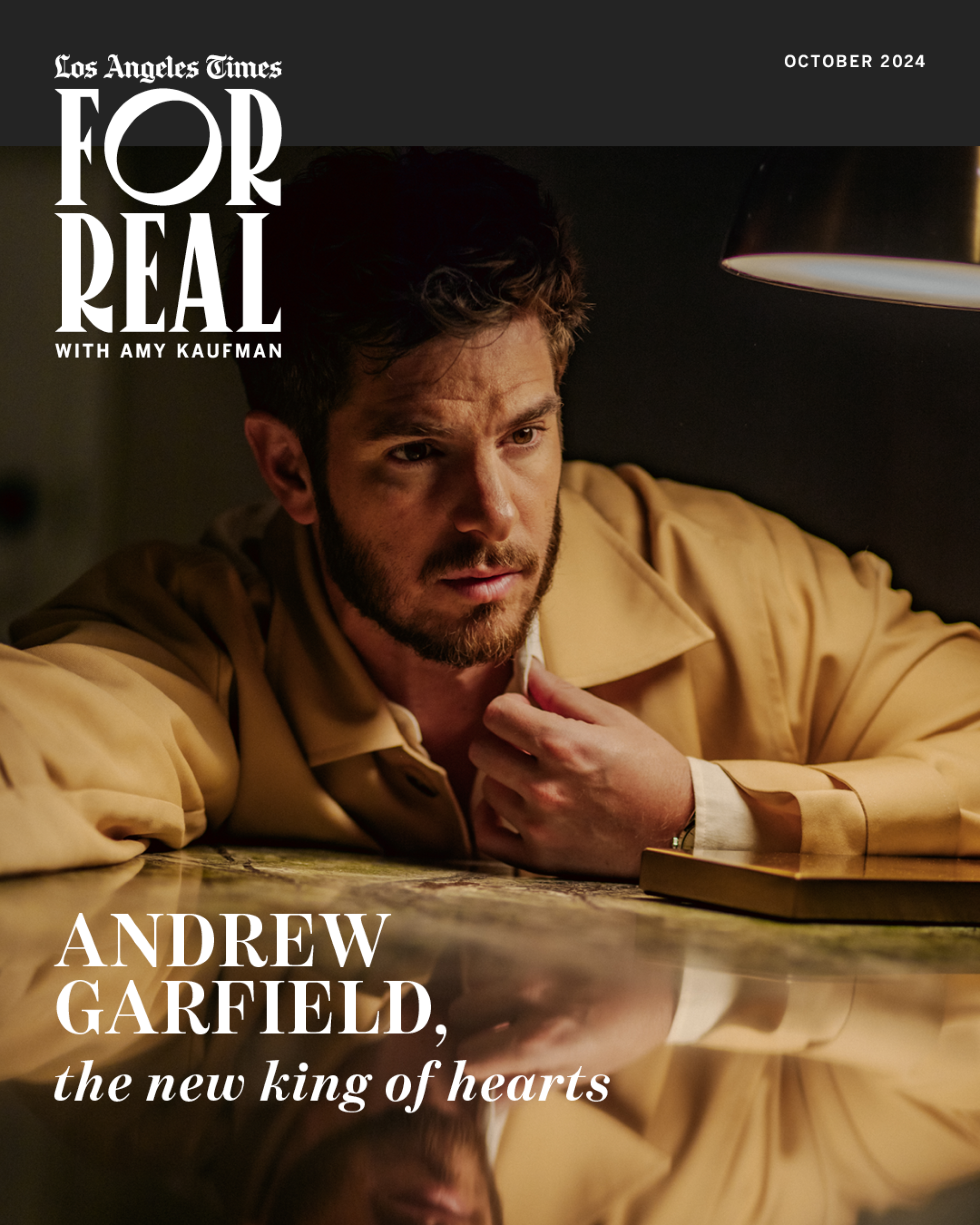
In trying to squeeze as much juice as he can out of the world, Garfield also can come across as fairly serious. He’s interested in interrogating consciousness, connection, universality, joy, surrender. (“I don’t think he would survive in shallow waters very happily for very long,” says Crowley.)
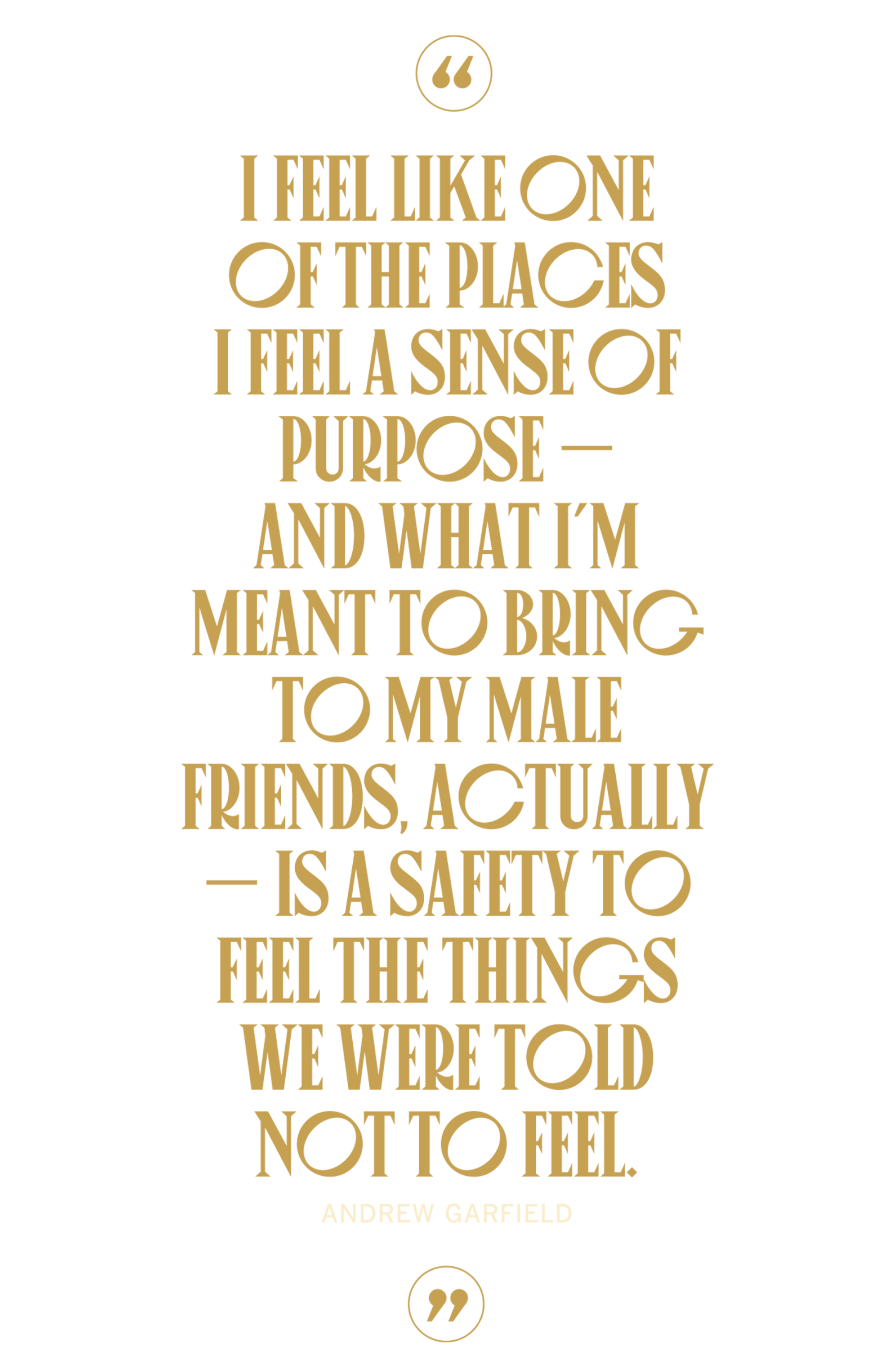
At times, this approaches the tone of your garden-variety L.A. surfer bro, spouting anecdotes about the benefits of ayahuasca. “I don’t want to be that guy that’s talking about plant medicine experiences in the L.A. Times,” he says, immediately proceeding to describe a plant medicine experience to the L.A. Times. (He had a vision that resembled an Australian Aboriginal dot painting, which he interpreted as a metaphor for our interconnectedness: “There is really no separation right now between you and I, because we’re connected by the air particles.”)
But Garfield, aided by his earnestness — and Britishness — more often comes across as a seeker, not a preacher. He views astrology, in which he’s been interested for decades, as falling somewhere between “a fun game” and “a beautiful roadmap,” a tool in his quest for self-understanding instead of a religious truth.
I’ve seen him speak about his natal chart in interviews before, so in anticipation of our meeting — and knowing the museum exhibition might pique his interest — I research my own. The printout I bring to the Getty contains references to houses, nodes and aspect patterns that mean nothing to me, but Garfield makes quick work of interpreting the language.
“So your sun sign is Aquarius, and your ascendant is Taurus, which is homebody-ish-ness. You like beautiful, lovely things like objects and clothes and textures,” he says, with more authority than a mystic with a neon sign and hunk of amethyst in their window on La Cienega. “And moon in Cancer — oh, wow. Cancer is incredibly emotional and sensitive, like incredibly compassionate and empathic. Cry easily. Is this adding up?”
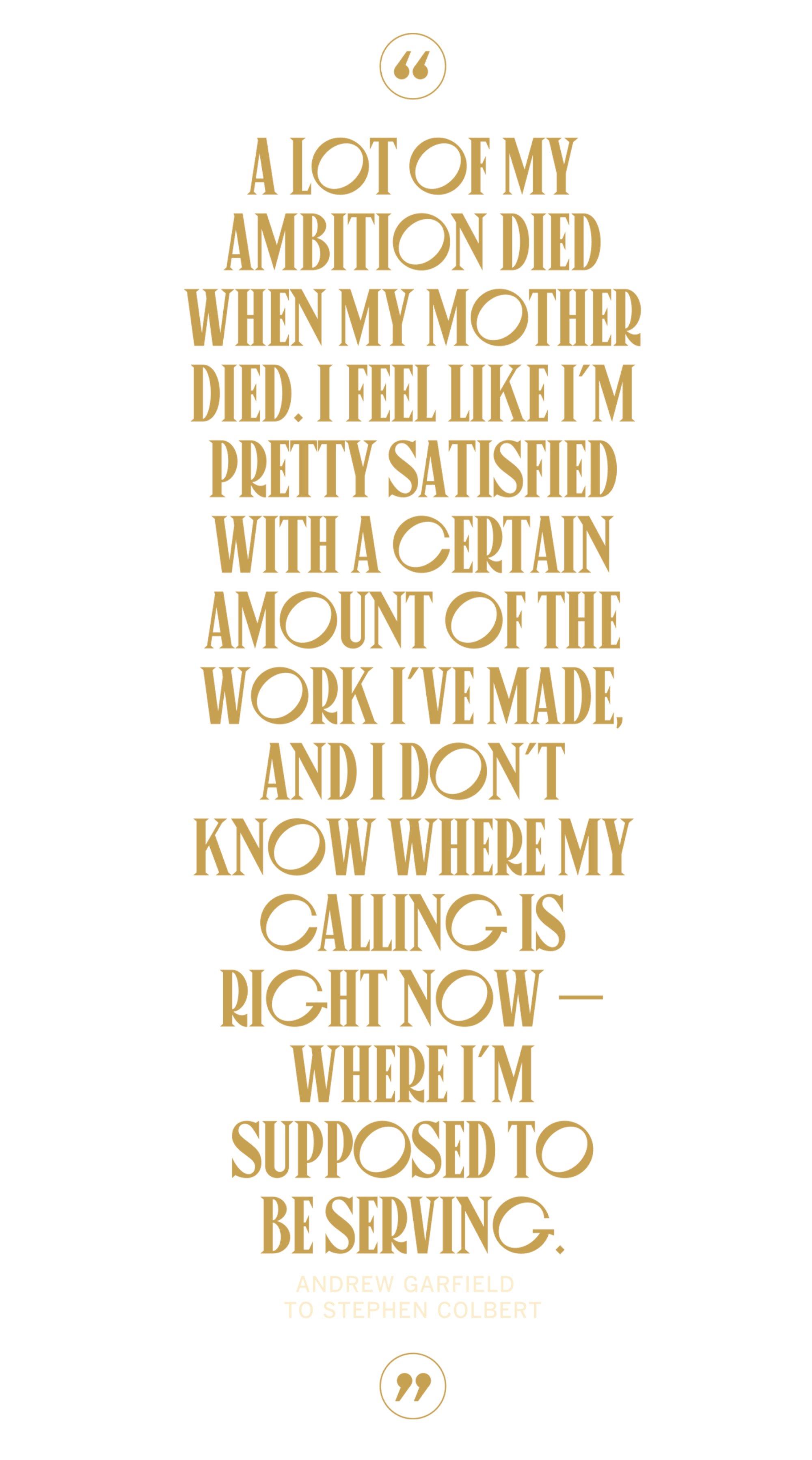
“That makes two of us,” I say, referring to our apparent shared access to tears.
“I feel like one of the places I feel a sense of purpose — and what I’m meant to bring to my male friends, actually — is a safety to feel the things we were told not to feel,” he says.
Garfield and I are nominally here to talk about his new film. To discuss where “We Live in Time” fits into his body of work, one impressively diverse for an actor his age: He’s been directed by Martin Scorsese (“Silence”), nominated for two Oscars (“Hacksaw Ridge” and “Tick, Tick … Boom!”) and led a major superhero franchise (“The Amazing Spider-Man”). And yet the work, if not superfluous, seems secondary right now to the quest for meaning.
A few weeks ago, he appeared on “The Late Show With Stephen Colbert.” During one of the commercial breaks, Garfield and the talk show host were catching up.
“I don’t really know what this is all about anymore, Steve,” he told Colbert.
“What do you mean?” the host asked.
“You know, just, like, a lot of my ambition died when my mother died. I feel like I’m pretty satisfied with a certain amount of the work I’ve made, and I don’t know where my calling is right now — where I’m supposed to be serving.”
“Well,” Colbert replied, “I think that’s it. Maybe now you’re at that turning point, that age, where your attention can go more toward mentorship — serving others, supporting others, giving.”
It’s an idea that feels good to Garfield — not in a purely altruistic way, he insists — but connecting, giving something of himself “just feels really f— pleasurable to me.”
Gabriella Salinardo / For the Times
He’s also tired. He mentions being tired often for a 41-year-old who makes sure he goes on a bike ride, plays tennis, surfs, swims or hikes every day. But it’s not so much physical fatigue as spiritual: “I don’t have the energy to try and dance for Grandma anymore. There’s a relief that comes from that exhaustion. Realizing life is not forever, so what do I want to spend my time doing?”
His zen outlook is somewhat recently acquired. As a boy, he was an athlete — first a gymnast and then a swimmer. His father was his swim coach, instilling in him a work ethic that prized accomplishment over fulfillment. Garfield clung to that ethos into his 20s, until he found the crippling anxiety too difficult to sustain. He was full of self-loathing, developed eczema on his face. He felt like he had a foreign body inside of him.
Crowley, who first directed Garfield in 2007’s “Boy A,” recalls how fearful the actor, then 23, was during that period.
“I now see that a lot of that fear was, in a way, his own excitement about his future and his terror of him wanting to go and have this thrilling career in front of him with everything that then did happen,” the filmmaker says. “And by God, it really soared. But now he’s 40, and I think he feels his age.”
Back then, Garfield says, he never would have taken a movie like “We Live in Time.” He purposefully turned down numerous romantic leads, not wanting to be typecast. “I feel like I have a bit of a free pass to do more things like that now,” he says. “I feel a certain satisfaction — and I’m tired. I feel safe in a certain way, like I’ve established myself.”
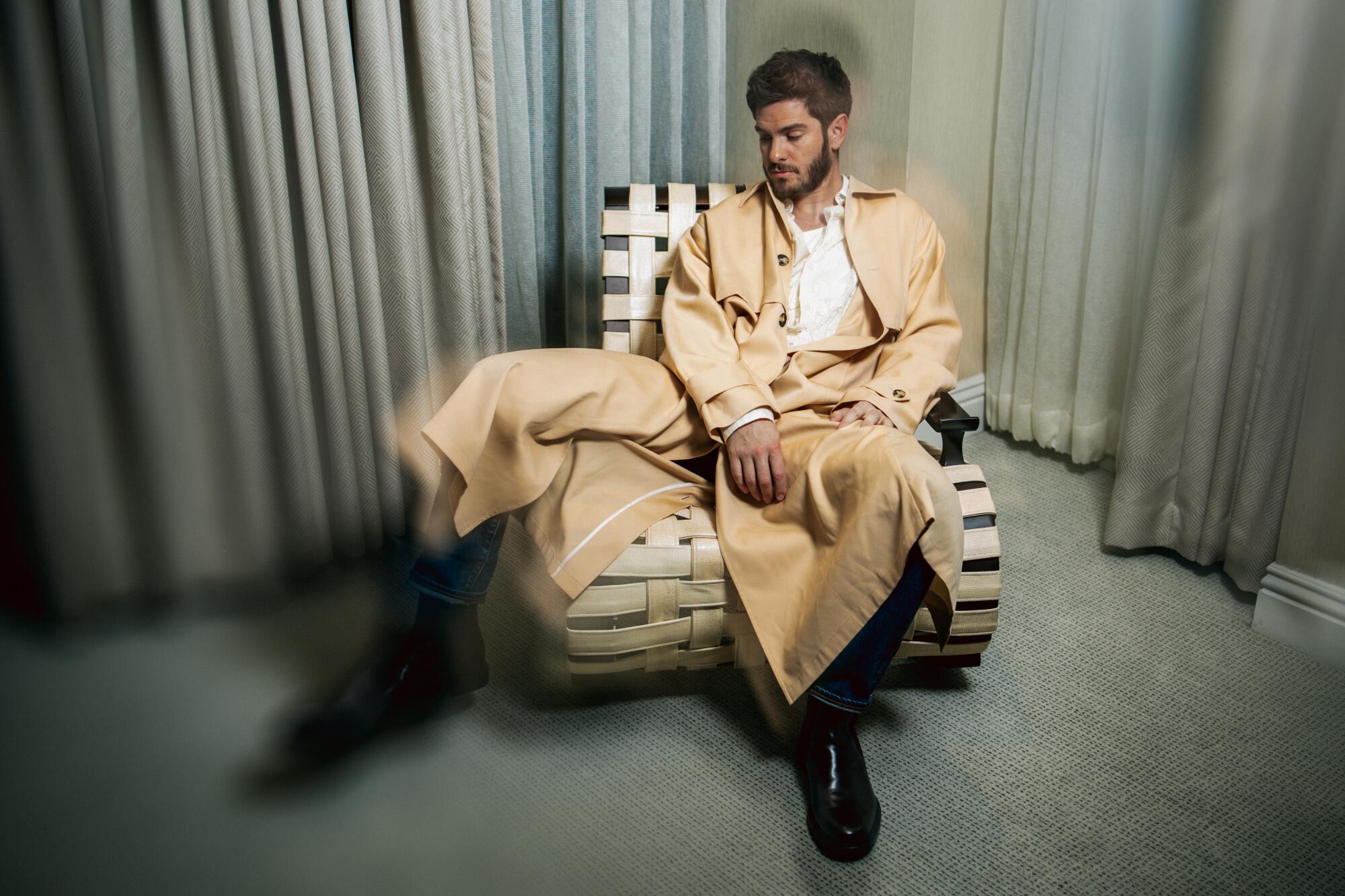
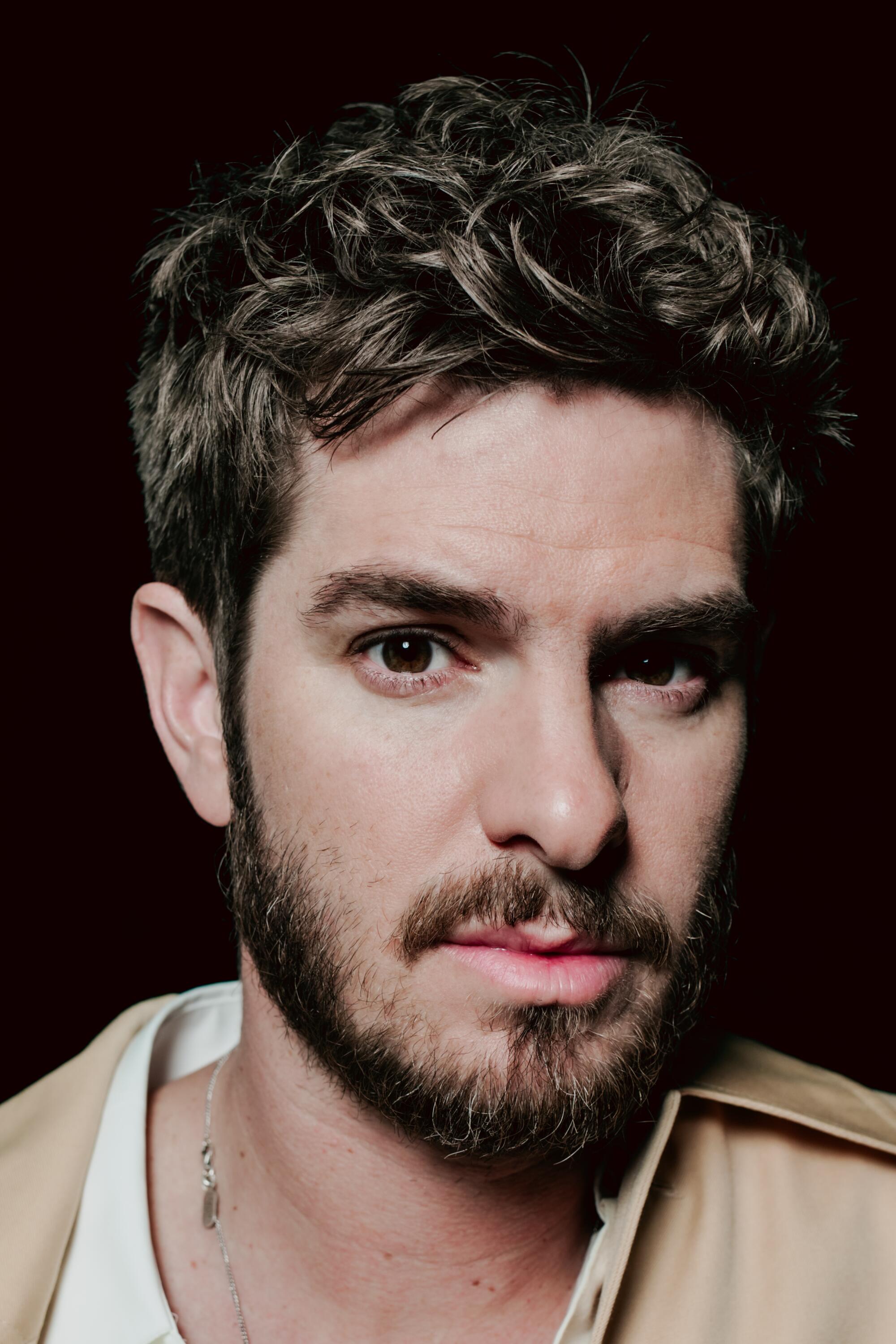
He’s also more comfortable asserting himself in the creative process. Nick Payne, the screenwriter of “We Live in Time,” says Garfield offered a plethora of suggestions to the script that the writer willingly incorporated. It was the actor’s idea, for instance, to include a scene in which his character tries his love interest’s food for the first time — she’s a chef, and Payne says Garfield felt it could be “one of the moments where he sort of falls in love with her. He wanted to make sure there weren’t any moments missing that could display the totality of his character. There’s a kind of heart-on-sleeve, obsessive pursuit for Andrew toward his craft.”
His life outside his career feels less settled. During that “Modern Love” podcast, when he was trying to decipher why he had started crying, Garfield made a confession that felt particularly raw: “I’m sad. Sad at losing anyone, anything, at the transience of certain relationships in my life, losing my mother, of course, the idea of losing my father, of not being there when my nephews are my age or older, the concept of not having children of my own.”
Now, walking toward the Getty’s tram down the hill, he describes the depth of feeling as a “new level of very earned sorrow.” Because his mother’s passing forced him to confront his own mortality, he’s also facing the things he longs for outside of Hollywood. But his references to wanting love or to start a family are oblique, even though the desire for them feels palpable.
He’s said before that he always thought he’d be the first of his friends to marry and have kids. I ask how he feels about that notion now.
“Honestly, maybe it’s just the ocean talking, but right now I can just feel it and know it as a mystery. We’re only in charge of so much,” he says.
Really? He’s gotten to a place of that much surrender?
“Sorry, it’s the truth,” he insists. “As I say, this is the ocean talking. You’re catching me on an ocean day. If a thing doesn’t want to happen at a certain time, it’s not going to happen at a certain time.
“It’s like a two-winged bird. One wing is me, the other wing is God or the mystery or spirit or the universe. Of course, I’m gonna be flapping my wing going toward what I want — and the other wing has to do what it’s gonna do. I’m not going to resist where I’m at.”
As if he can sense my skepticism, he says: “I’m absolutely presenting this version for the purposes of our conversation.”
Well, don’t bulls— me.
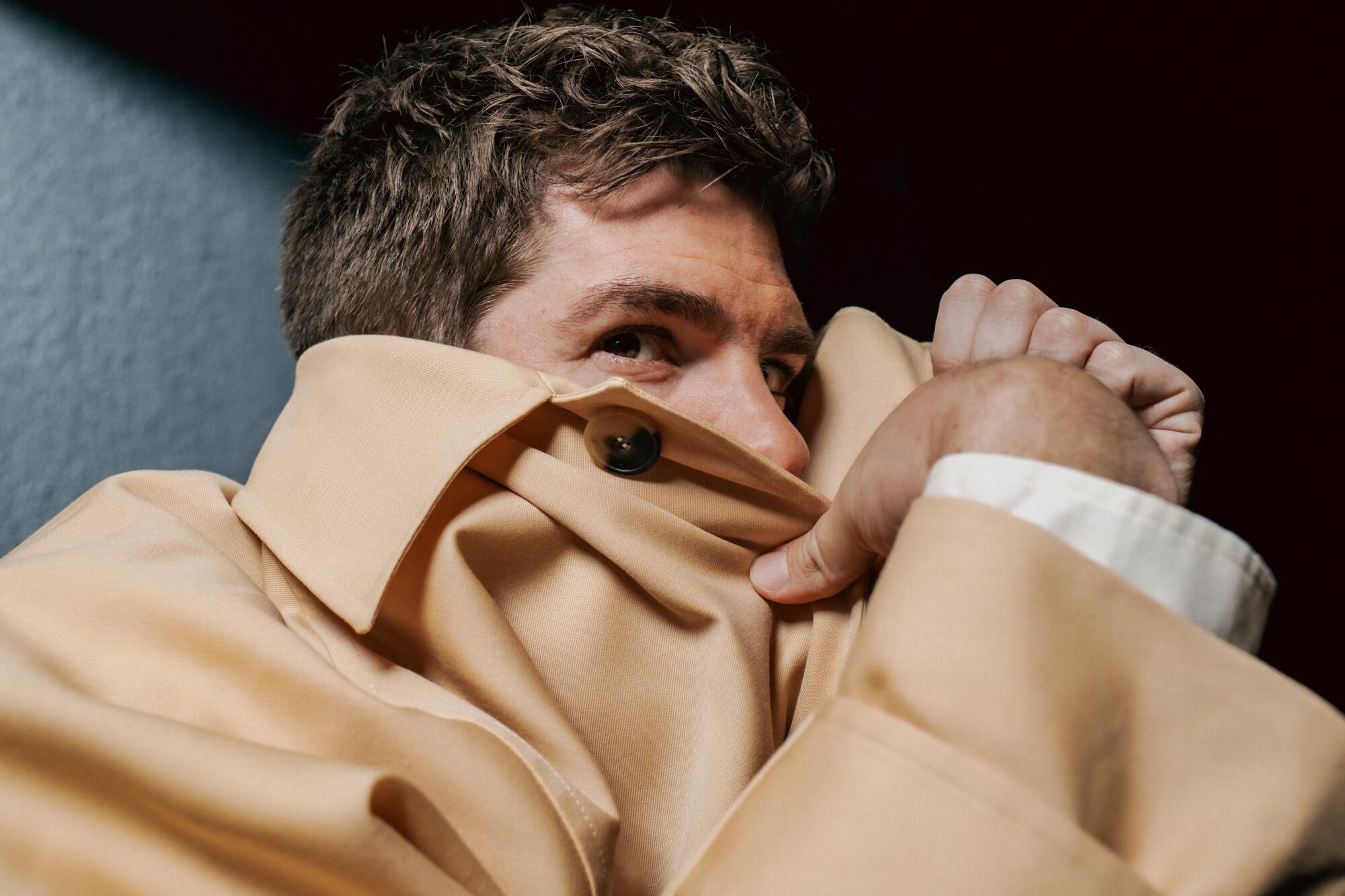
“I’m not bulls— you. I’m not saying that it’s not authentic. It’s a true part of me. But I’m absolutely imperfect with this. I can be scared and fearful of not living into all the things that I want to live into in my life. I don’t want to give this impression that I’m this hippie-dippy guy just flowing through life.”
We seem to be dancing around the edge of something. We’re on the tram now, weird elevator music threatening to drown out the conversation. Garfield looks out over the 405, where a line of cars snakes along the road.
“Amazing, this is,” he says, happy for the distraction. “I love seeing all the red lights on the highway. I think that’s so weirdly cool. When I’m not on it myself, that is.
“But yeah,” he picks up again, “You can’t force yourself into — I don’t know. I don’t know.”
He takes the conversation off the record, something he does at least half a dozen times over the course of our Getty visit. For as emotionally available as he is, Garfield has long drawn a firm line in the sand when it comes to discussing his personal life. He is intensely private and safeguards any detail about his offscreen life that might reveal his whereabouts. Why did he choose the museum for the interview? “Well, my more frequentable places I wanted to keep private.” Does he stay by the beach when he’s in L.A. to go surfing? “I can’t let you know where I live.” Oh, you have a place here? “You’re not allowed to know.”
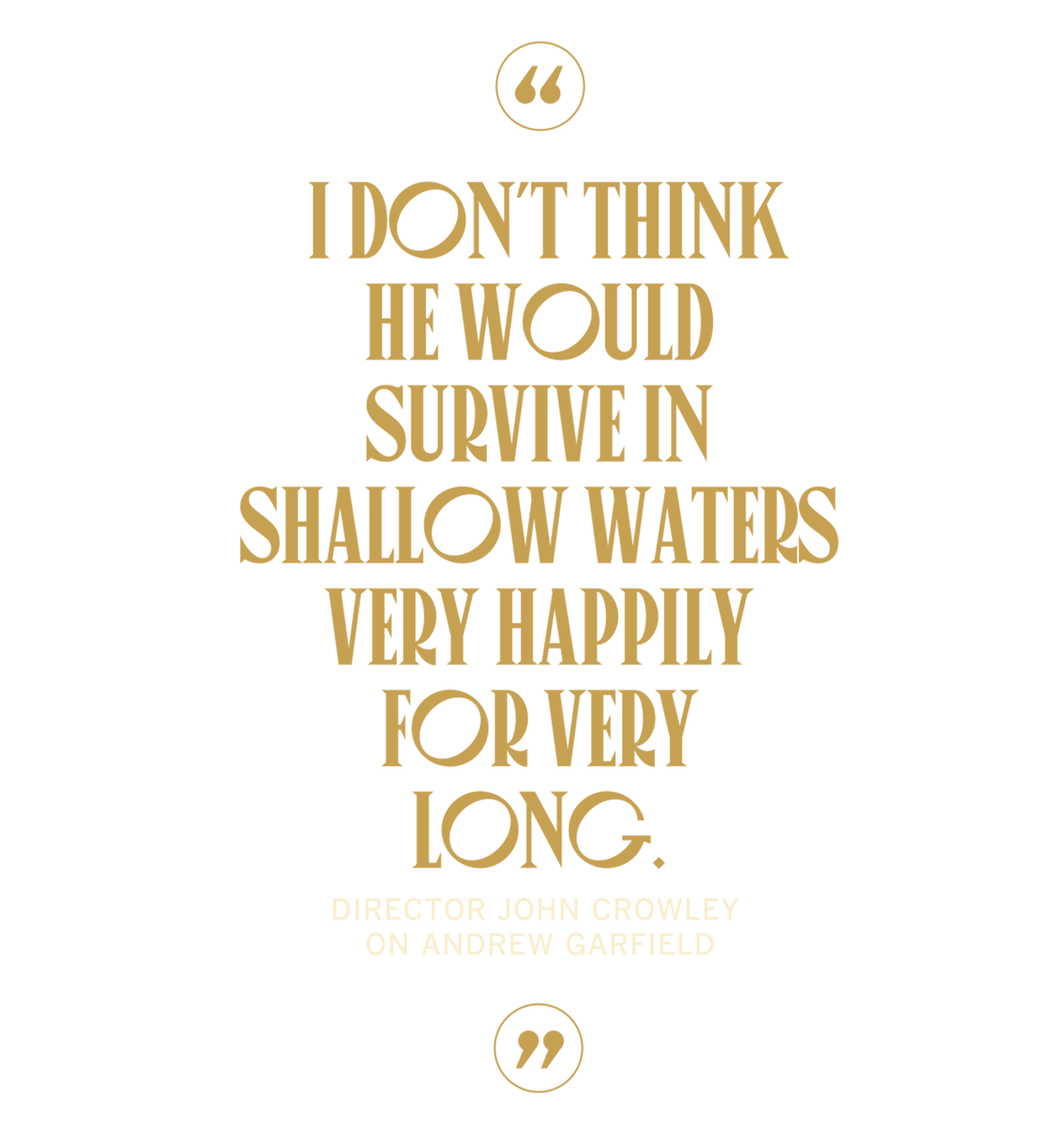
He’s never rude, but he is unwavering in his stance. “I’ve learned my lesson in that regard,” he says. “When I was younger, I was much more liberal with what I shared, and it wasn’t healthy for me because it wasn’t welcome in the culture.”
His partners have not always followed his lead. This year, Garfield emerged holding hands in paparazzi photos with Dr. Kate Tomas, a self-proclaimed professional witch. Her career generated intrigue from fans and the media, and in July the Sunday Times profiled her. She never mentioned Garfield by name but denied using a spell to seduce him and referenced how difficult she’d found being in the glare of the spotlight: “I don’t want to sit under anybody’s shadow.”
Days after I meet Garfield in early October, Tomas took to Instagram to note she and the actor had been broken up for months.
Back on our tram ride, Garfield would not answer questions about her. Instead, he returned his gaze to the freeway. Cities make him anxious. There’s something about the way nature makes him feel small that he finds soothing — being spit onto the sand by powerful waves, walking in the shadow of redwoods. “It’s our duty to be custodians of the planet and keep everything fecund, and we’re literally raping it,” he says, laughing at the absurdity. He doesn’t know if he has what it takes to grow food or raise animals, but he thinks he’d like to try — to be like David Beckham, merrily tending to his beehives and organic produce in the English countryside.
“There’s a primal yearning to be part of nature and tethered to eternal things. It’s also just hot. Like, that’s a sexy dude with his f— farm life,” he says. “I like the idea of getting up on a misty sunrise morning, going down to be with the chickens, harvesting the eggs and looking at how the rhubarb is doing. Going to the outdoor kitchen that he designed with Guy Ritchie, grilling an onion for an egg scramble that he’s making for his family. That’s the dream.”
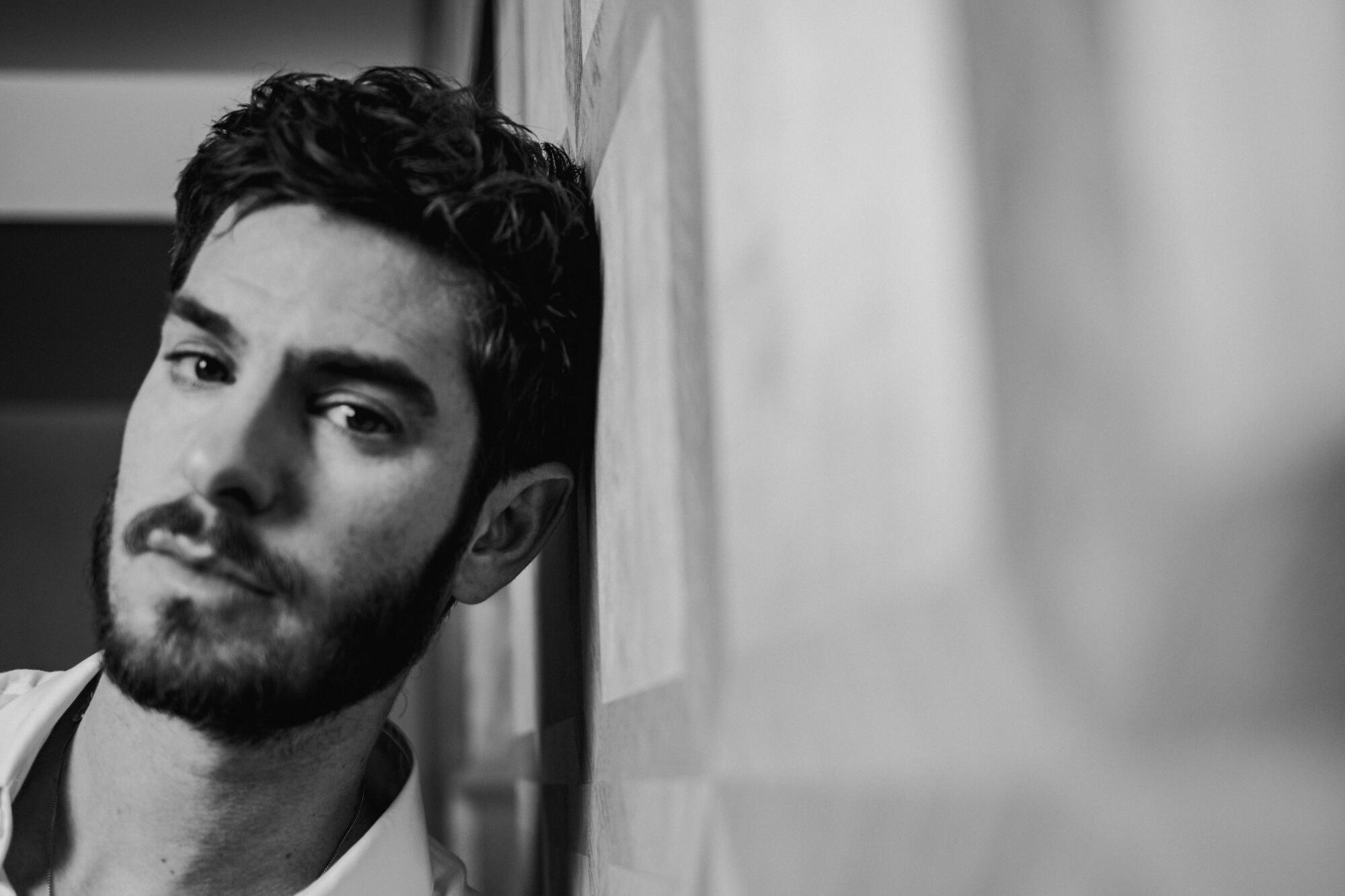
When Garfield speaks about joy, the memories that rise to the surface also offer a childlike vision of domestic bliss: visiting Disneyland with his family, playing basketball, sledding at Christmastime, his mother’s cooking. The desire to re-create this world for himself feels palpable, even if he won’t explicitly express it. “Owning what we truly long for is full of trepidation and fear and potential sorrow,” he says, speaking for the collective instead of himself.
But if his dream eludes him — at least for now — Garfield is striving for something like acceptance, to give up the search for a moment and sit down where he is.
“Sometimes after you’ve banged your head against a wall for a while, you’re just exhausted and you collapse and go: ‘OK, I guess I better surrender to this,’” he says. “It’s never a pretty surrender. But when you stop fighting, there’s relief, and then there’s presence. And that’s real vitality.”

